Building Regenerative Communities for the Path Ahead Event Recap
Build It Green recently hosted Building Regenerative Communities: Meeting the Moment for the Path Ahead, an event showcasing the transformative work of the Regenerative Communities Cohort. They’ve spent the past months exploring how regenerative practices can create equitable, collaborative, and thriving communities. It also celebrated the inaugural cohort’s yearlong journey, focusing on how regenerative principles can address challenges in housing, development, and community health.
The event began with reflections on regeneration as a process of reconnection — reconnection with natural cycles, each other, and the broader systems shaping our lives. Odin Zackman, a strategic advisor for Build It Green, set the tone with powerful words from poets Mary Oliver and Maria Sabina. He framed regeneration as a call to challenge the status quo and reimagine our communities. “It is no sign of good health to be well-adjusted to a profoundly sick society,” Zackman said, emphasizing the need to move toward systems rooted in equity, collaboration, and shared responsibility.
The final session brought a powerful shift—a chance to connect face-to-face, deepen relationships, and reflect on shared progress. It was an opportunity to turn virtual collaboration into tangible connection and for participants to collectively envision next steps for their work. By bridging the gap between where these communities are and where they aspire to be, this cohort is helping to sow the seeds for a more regenerative future.
Cohort members shared how the principles of regeneration influenced their work and sparked new ways of thinking.
Elevating Marginalized Voices
Mick Penn, Northern California regional director at Swinerton, discussed the importance of elevating marginalized voices in shaping community narratives. “Regeneration is a journey, not a destination,” Penn said. “It’s about putting the voices that are usually last, first, and letting them shape the narrative of what we’re building together.” Penn’s reflections highlighted the potential for regeneration to challenge corporate practices and foster meaningful partnerships with communities.
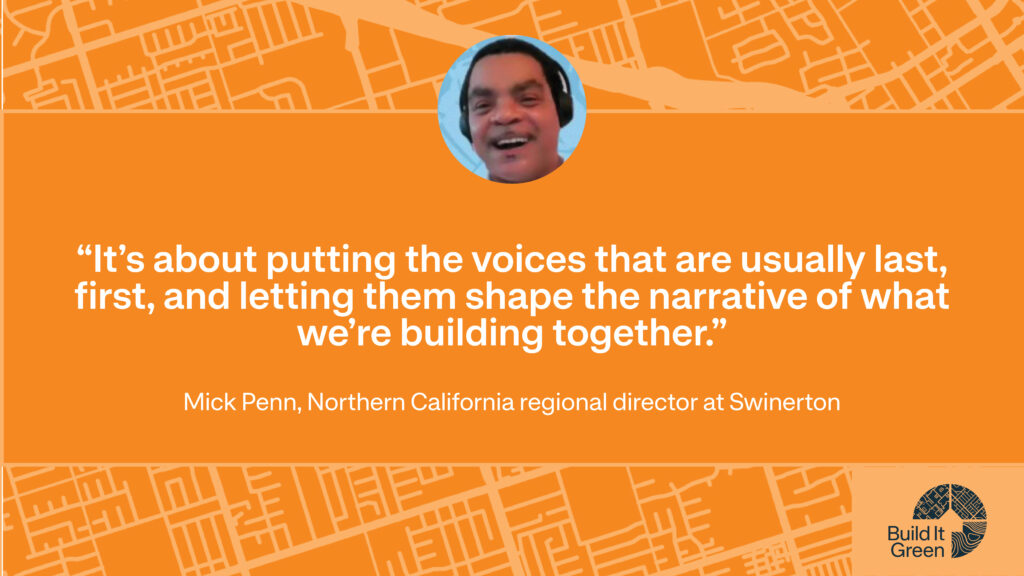
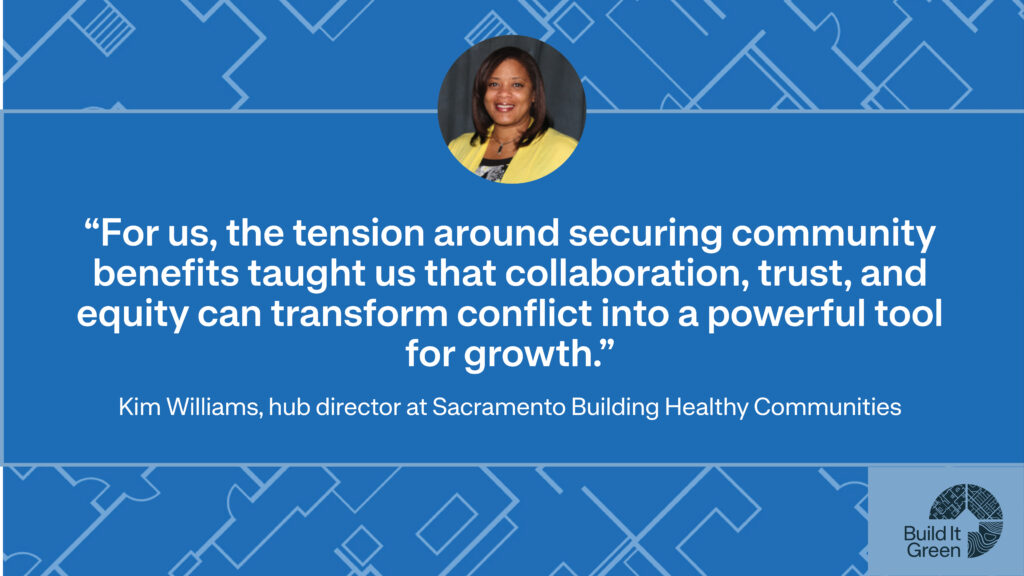
Navigating Tension for Growth
Kim Williams, hub director at Sacramento Building Healthy Communities, shared her experience advocating for community benefits agreements to prevent displacement in Sacramento. She reflected on how the cohort’s teachings reframed her understanding of tension in collaborative work. “Tension can either divide or strengthen a group,” Williams said. “For us, the tension around securing community benefits taught us that collaboration, trust, and equity can transform conflict into a powerful tool for growth.” Williams noted that embracing tension as an opportunity strengthened her coalition and its ability to advance equity-focused development.
Aligning Work With Natural Cycles
For Iliana Nicholas, Program Manager at EPACANDO, regeneration offered a new lens for her work in housing and community planning in East Palo Alto. She spoke about moving from a reactive mindset to one centered on systems thinking. “Regeneration is about aligning with natural cycles and ensuring disenfranchised voices are central in decision-making,” Nicholas said. “It’s a practice of connection—within ourselves, our communities, and the systems we navigate.” The concept of natural cycles, she explained, helped her find balance in her work and approach challenges with intention.
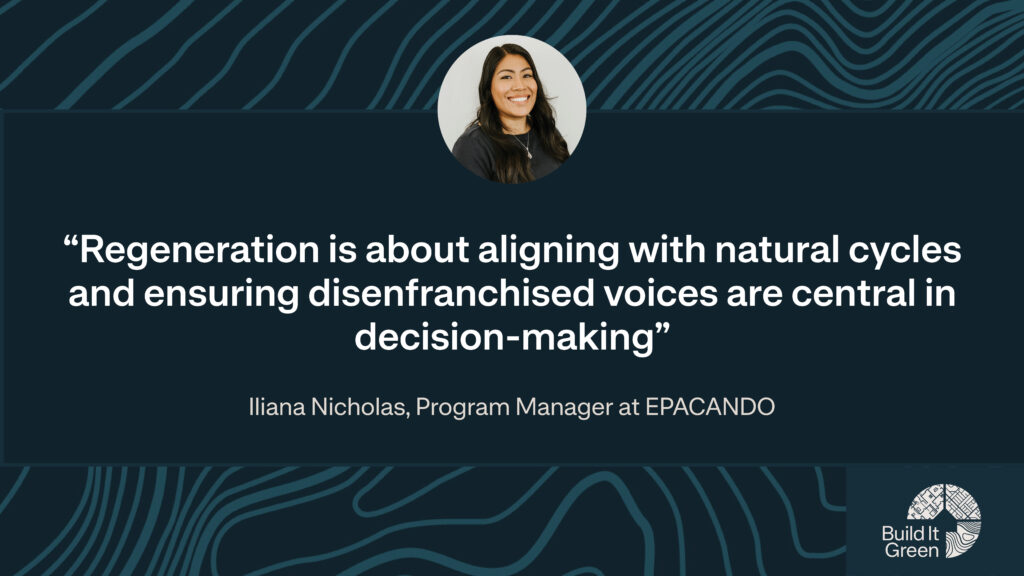
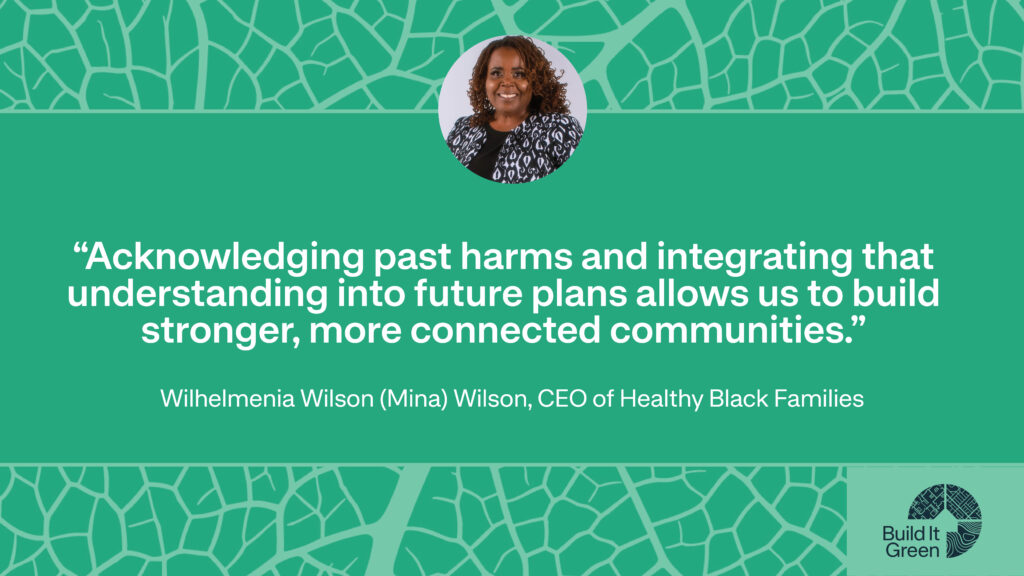
Healing Historical Harms
Wilhelmenia Wilson, CEO of Healthy Black Families, connected regeneration to healing historical harms, particularly in South Berkeley. She emphasized that regeneration is not just about growth but also about acknowledging and addressing past inequities. “Regeneration isn’t just about growth; it’s about healing,” Wilson said. “Acknowledging past harms and integrating that understanding into future plans allows us to build stronger, more connected communities.” Her reflections underscored the importance of pairing historical awareness with forward-thinking strategies to create inclusive, resilient neighborhoods.
Guiding Long-Term Infrastructure Projects
Darin Ranelletti, project lead at BART, highlighted how regeneration principles guide long-term infrastructure projects and address the impacts of historical displacement. Ranelletti reflected on how adopting regenerative thinking shifts the approach to projects like transit-oriented developments, focusing on building trust, repairing past harms, and ensuring equitable outcomes. “Projects, like ecosystems, have seasons,” he said. “Recognizing cycles helps us avoid burnout, embrace renewal, and create infrastructure that is both functional and regenerative.”
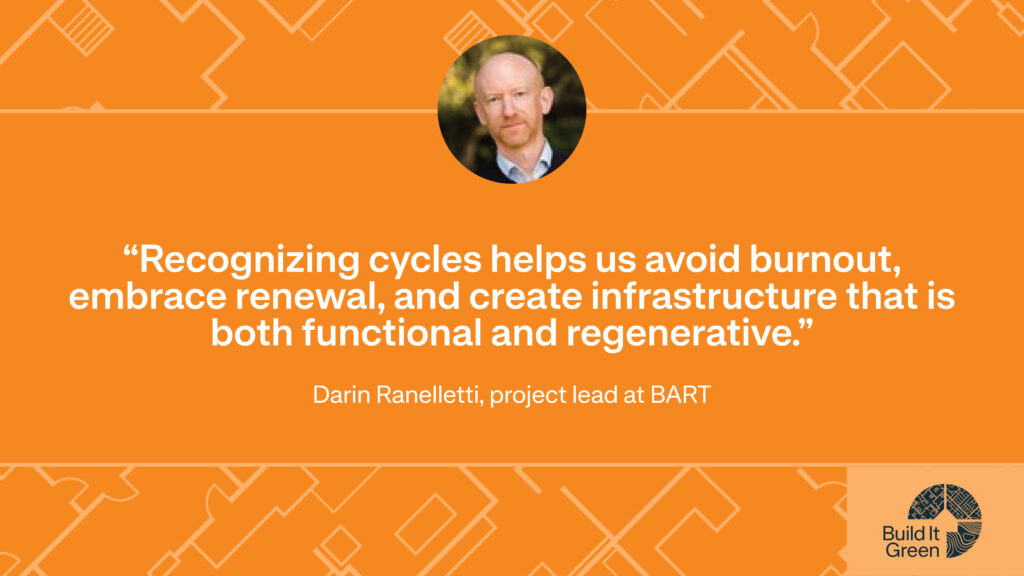
Key Lessons From the Cohort
As the cohort members shared their experiences, several recurring themes emerged. Many emphasized the importance of aligning work with natural cycles, allowing for moments of reflection and renewal. Williams described this process as “wintering,” explaining how it fosters sustainable progress. Others highlighted how navigating tension in collaboration can deepen trust and cohesion, as well as the role of whole-systems thinking in fostering stronger connections between people, land, and systems.
Ranelletti shared how conversations about the historical impacts of displacement in South Berkeley opened a space for healing and inspired new possibilities for future development. Penn echoed similar sentiments, emphasizing the importance of challenging traditional narratives and centering marginalized voices. For Nicholas, the program provided a new framework for integrating equity into her work, allowing her to better connect with broader systems change.
Build It Green is expanding its Regenerative Communities Program in 2025 to include more in-person opportunities for collaboration and learning. The program will feature monthly public discussions, called Regenerative Conversations, which will explore how these principles can address real-world challenges. Additionally, Build It Green will launch its Core Communities Offering, which will provide workshops and coaching to help local leaders apply regenerative practices in
their work.
Reflecting on the event, Zackman noted that the regenerative approach is as much about connection as it is about outcomes. Penn echoed this sentiment, saying, “This work isn’t just about projects. It’s about shifting mindsets, fostering connections, and creating a foundation for regenerative, equitable communities.” The work of cohort members like Penn, Williams, Nicholas, Wilson, and Ranelletti demonstrates how regeneration can be a powerful tool for creating a more just and equitable future.
For more information about the Regenerative Communities Program or to explore participation opportunities, please reach out to our programs team at [email protected].
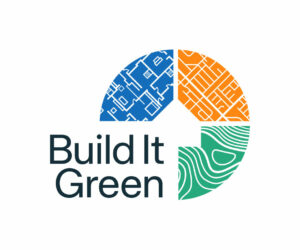

Alex Coba
Communication Associate
As a proud California native from Stockton, Alex brings a wealth of experience and a versatile skill set. He has a solid communication background with a Bachelor of Arts in Journalism and Public Relations from California State University, Chico. Alex is adept at strategic communications and media relations, with experience gathering and sharing stories from his local communities that uplift the unique spirit and values of those places. He is excited to join Build It Green, where he can apply his talents to further BIG’s mission to help communities across California thrive